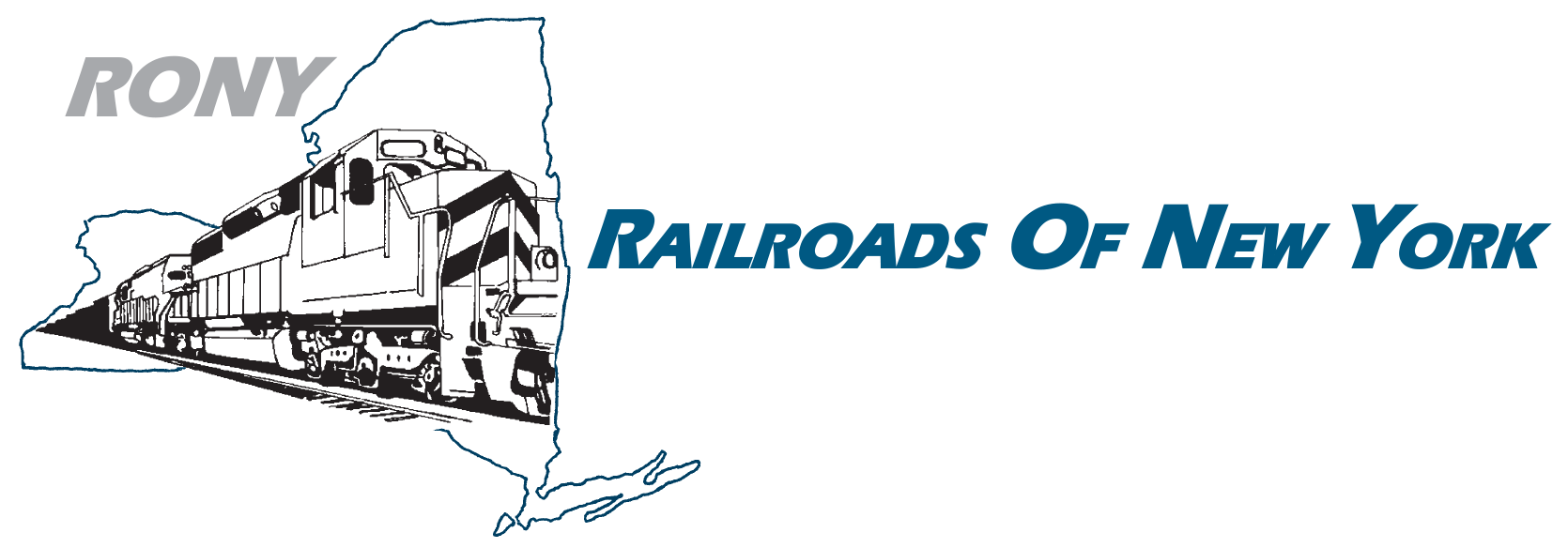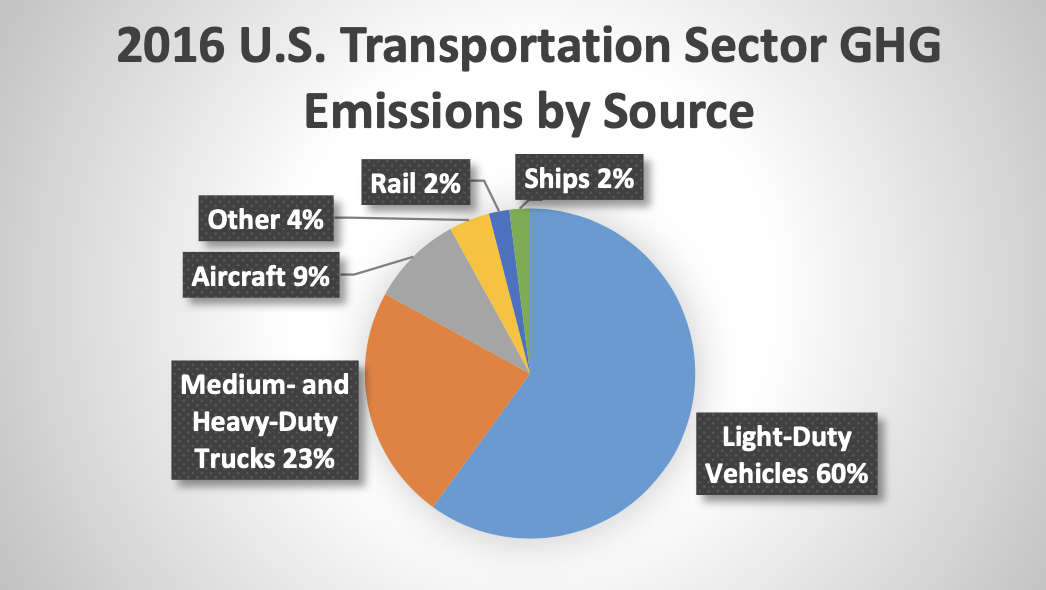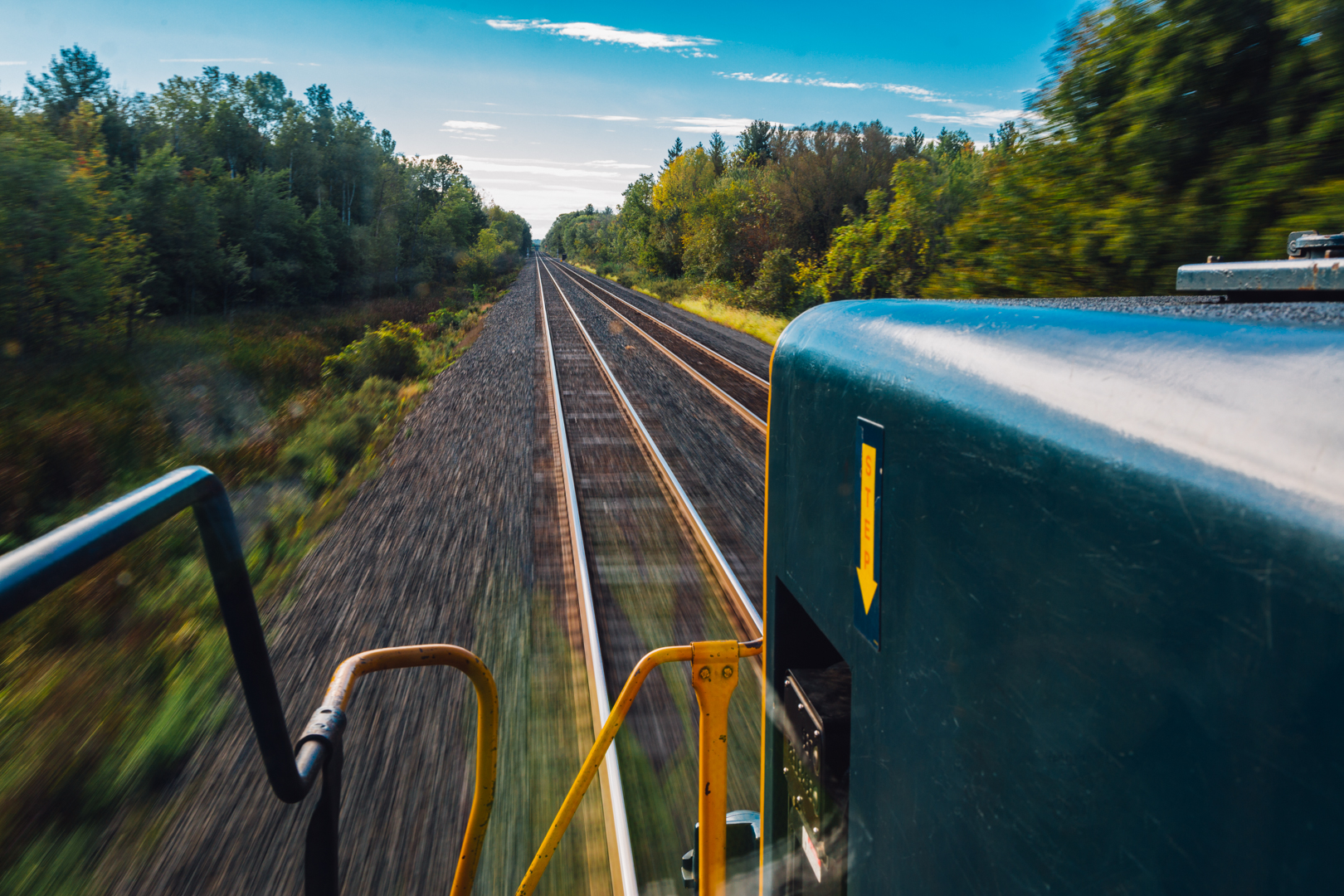Freight railroads are the most environmentally sound way to move freight over land. According to the Association of American Railroads, on average, trains are four times more fuel efficient than trucks. They also reduce highway gridlock, lower greenhouse gas emissions and reduce emissions of particulate matter and nitrogen oxides.
It would have taken approximately 4 million additional trucks to handle the 72 million tons of freight that originated in, terminated in, or moved through New York State by rail in 2014.
Tier 4 locomotives are the most advanced diesel locomotives in service that are being increasingly used by railroads. Tier 4 locomotive technology reduces particulate emissions from diesel locomotives by as much as 90% and nitrogen oxide emissions by as much as 80%.
Within New York State, four Class I Railroads (CSX, Canadian National, Canadian Pacific, and Norfolk Southern) and 33 Regional (Class II) and Shortline (Class III) freight railroads serve virtually every part of the state. They transport a wide variety of goods, from automobiles, chemicals, minerals, and energy products, to agricultural grains, food fertilizers and feeds, lumber, paper, and other forest products, as well as steel, stone, and other aggregates.
-
On a ton-mile basis, railroads emit four times less pollution than trucks and a typical freight train carries a capacity of more than 280 trucks.
-
According to the Federal Railroad Administration, freight railroads can move a ton of freight close to 500 miles on one gallon of fuel, making them approximately four times more fuel-efficient than trucks.
-
According to the 2009 NYS Rail Plan completed by the NYS Department of Transportation, a 1% shift in goods traffic from trucks to freight rail would save approximately 111 million gallons of fuel each year and reduce greenhouse gases by 1.2 million tons.
In 2019, New York State enacted the Climate Leadership and Community Protection Act, an ambitious environmental initiative that is designed to drastically reduce statewide greenhouse gas emissions across all sectors of the economy, including the transportation sector. In order to help achieve the statewide emissions reduction goals as outlined in the law, shifting long-haul freight movement from trucks to rail would significantly contribute to reducing emissions in the transportation sector. According to the U.S. Environmental Protection Agency (EPA), the transportation sector accounts for approximately 27% of total U.S. greenhouse gas emissions. In addition, freight railroads accounted for just 0.6% of total U.S. greenhouse gas emissions in 2015 and just 2.3% of transportation-related greenhouse gas emissions.
In the transportation sector, greenhouse gas emissions are directly related to fuel consumption, an area where freight rail transport has significant advantages over trucks. According to the Association of American Railroads (AAR), moving freight by rail instead of truck reduces greenhouse gas emissions by approximately 75%. Railroads, on average, are approximately four times more fuel efficient than trucks and can move one ton of freight more than 470 miles per gallon of fuel – a 101% improvement since 1980 – and a single freight train can replace several hundred trucks on the road. As an illustrative example, if just 10% of the freight that moves by the largest trucks moved by rail instead, fuel savings would be more than 1.5 billion gallons per year, and annual greenhouse gas emissions would fall by more than 17 million tons – equivalent to removing 3.2 million cars from the highways for a year or planting 400 million trees.
Promoting the use of freight rail over trucks will help advance many of the state’s clean energy and emissions reduction goals. To help further these efforts, it is important that New York State continue to partner with the freight rail industry to help keep the state’s rail network in a safe operating condition. This will help our state’s freight rail carriers attract more customers which will in turn reduce the amount of truck traffic on our highways. The freight rail industry invests significant capital back into the rail network to help ensure a safe, efficient, and environmentally-friendly mode of freight transportation, with the nation’s Class I railroads alone investing nearly $30 billion annually. These investments will only continue to increase as the Federal Highway Administration has recently forecasted that total U.S. freight shipments will rise from an estimated 18.1 billion tons in 2015 to 25.5 billion tons in 2040, a 41% increase.
In 2017, U.S. freight railroads moved a ton of freight an average of 479 miles per gallon of fuel, more than double the 1980 average of 235 miles per gallon. To help drive this increase in fuel efficiency, freight rail companies have removed from service thousands of older locomotives and replaced them with new, more efficient locomotives; increased the amount of freight on railcars and trains; developed and implemented highly-advanced computer software systems that can calculate the most fuel-efficient speed for a train over a given route, determine the most efficient spacing and timing of trains on a railroad’s system and monitor locomotive functions and performance to ensure peak efficiency; installed idling-reduction technologies, such as stop-start systems that shut down a locomotive when it is not in use and restart it when it is needed; and, expanded the use of distributed power to reduce the total horsepower required for train movements.


